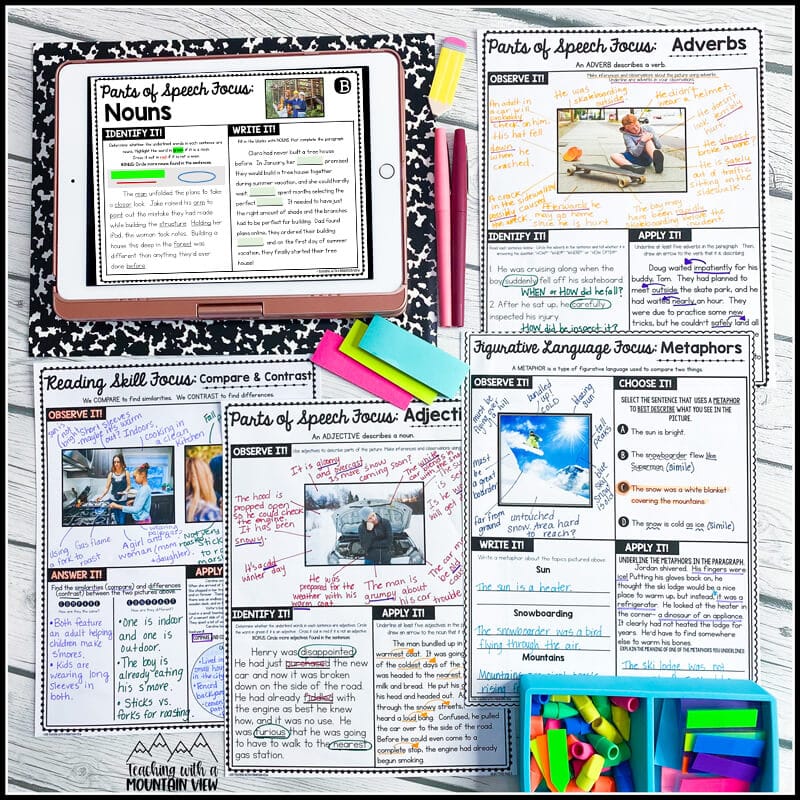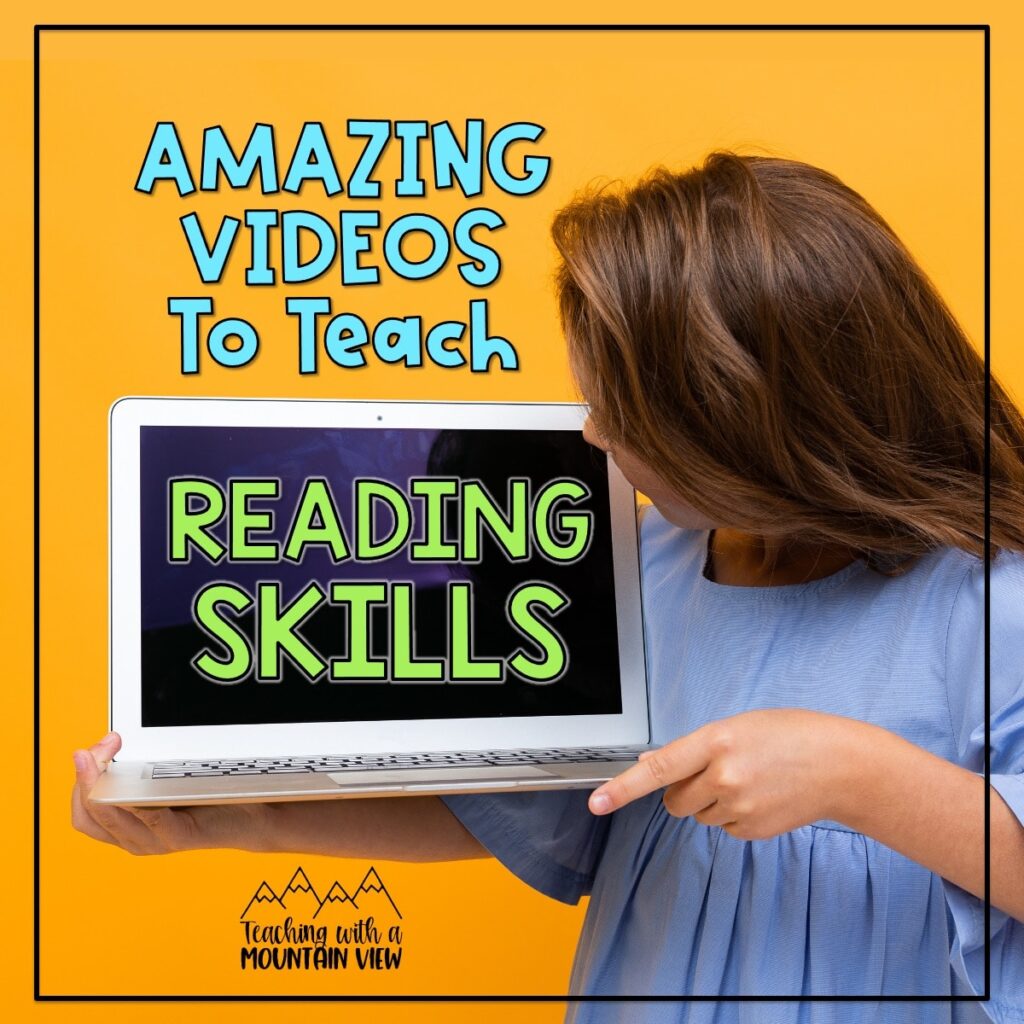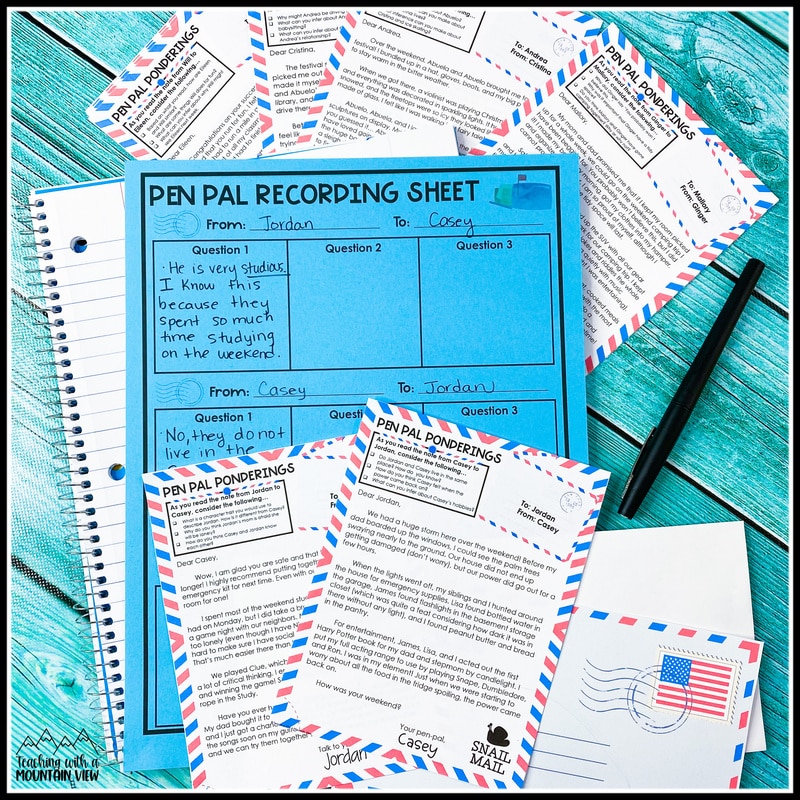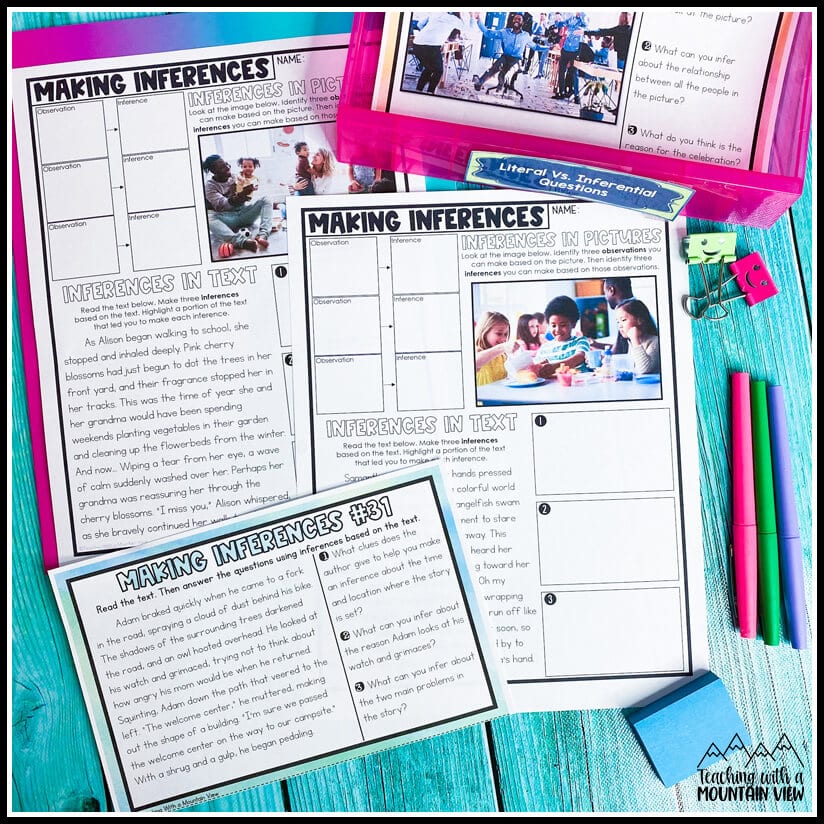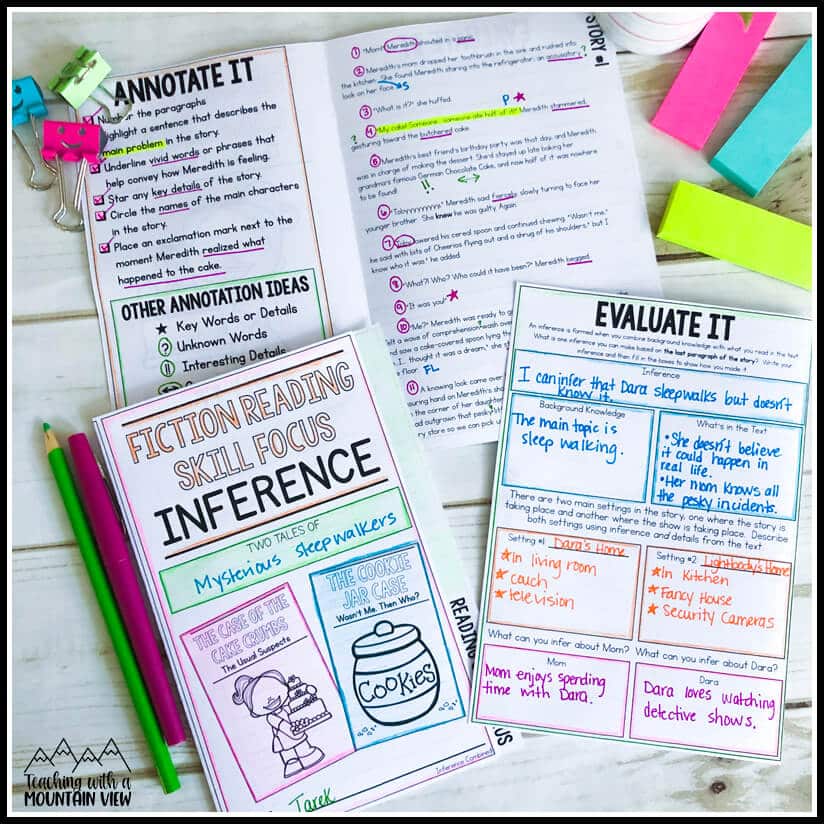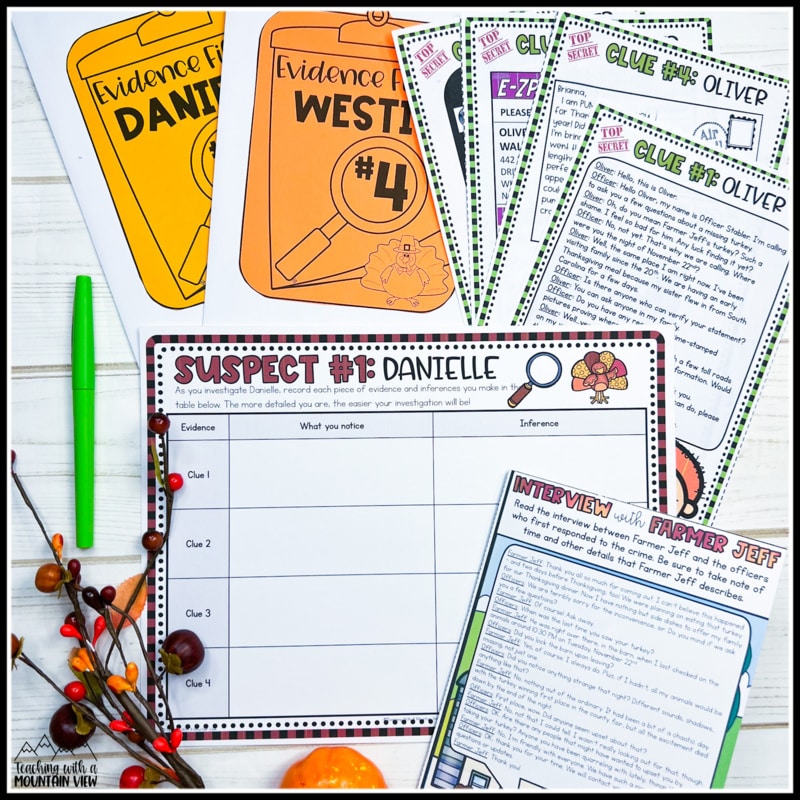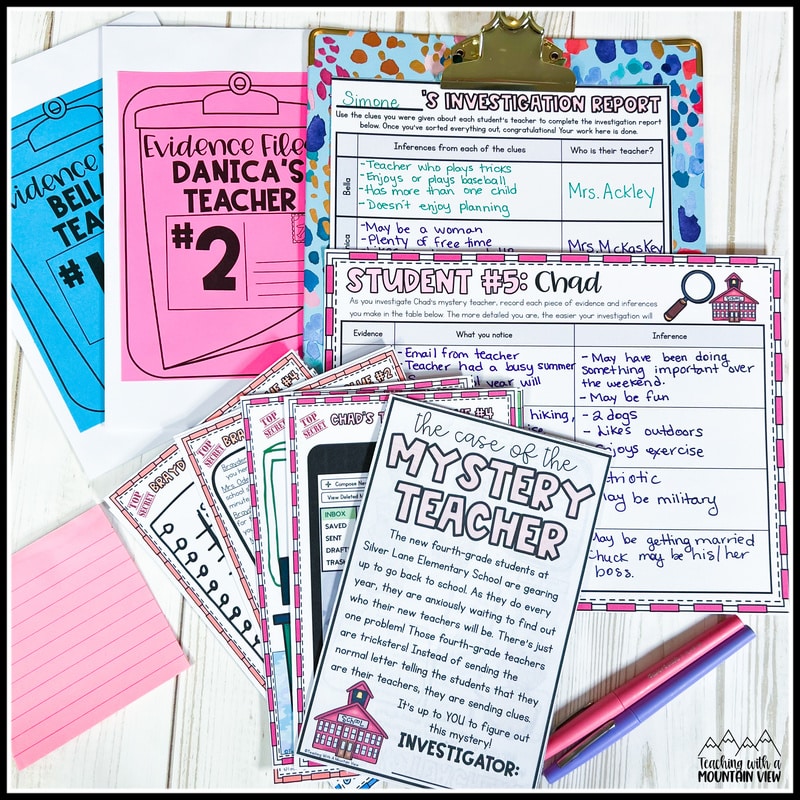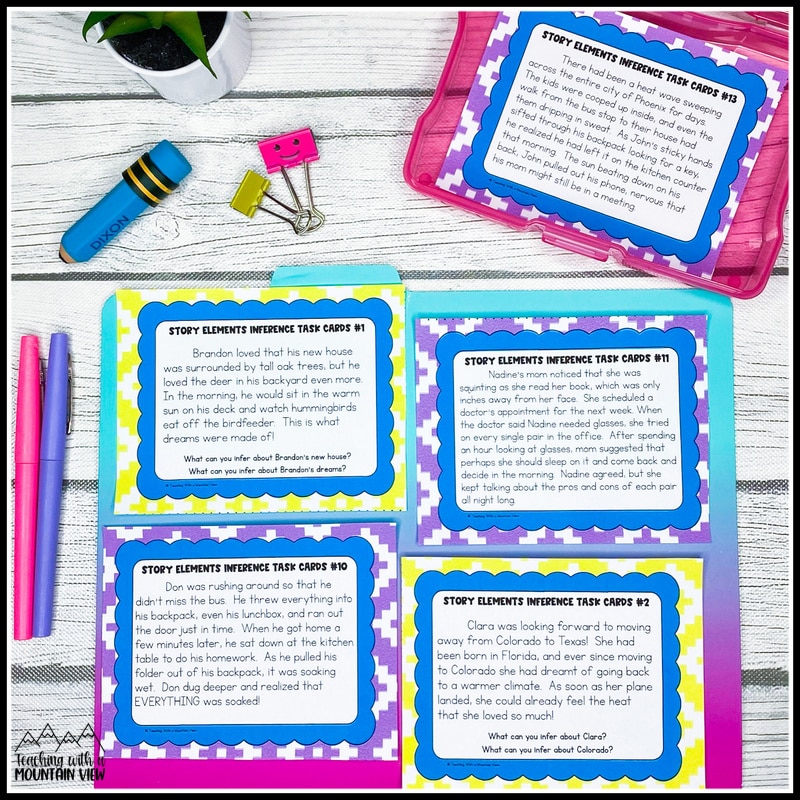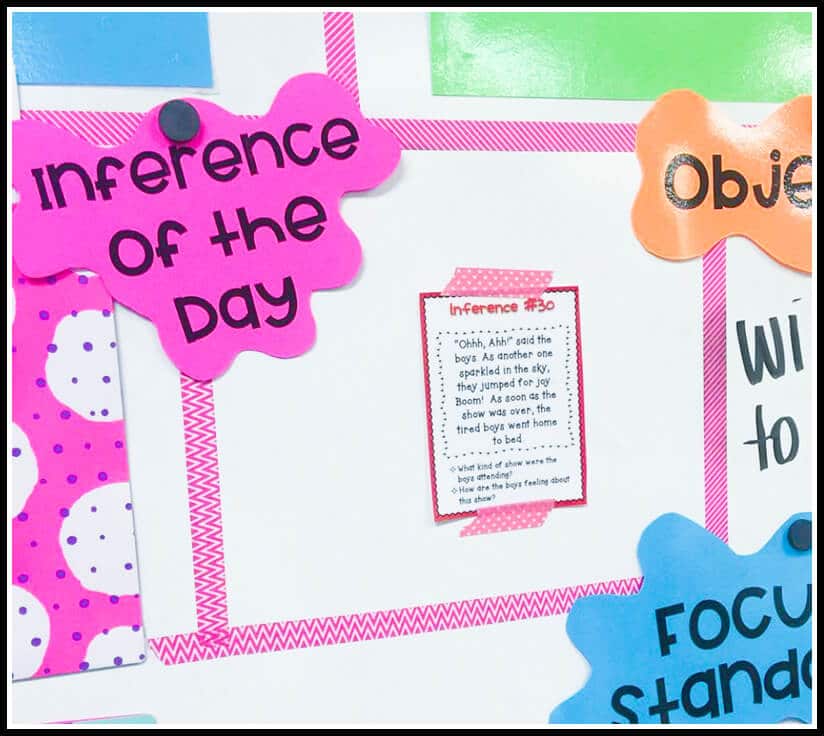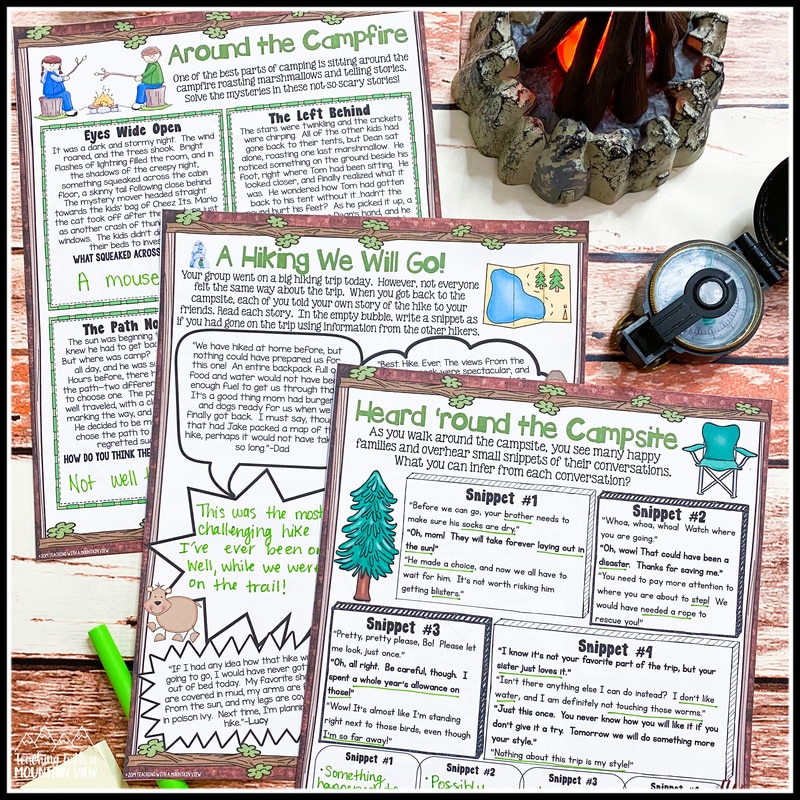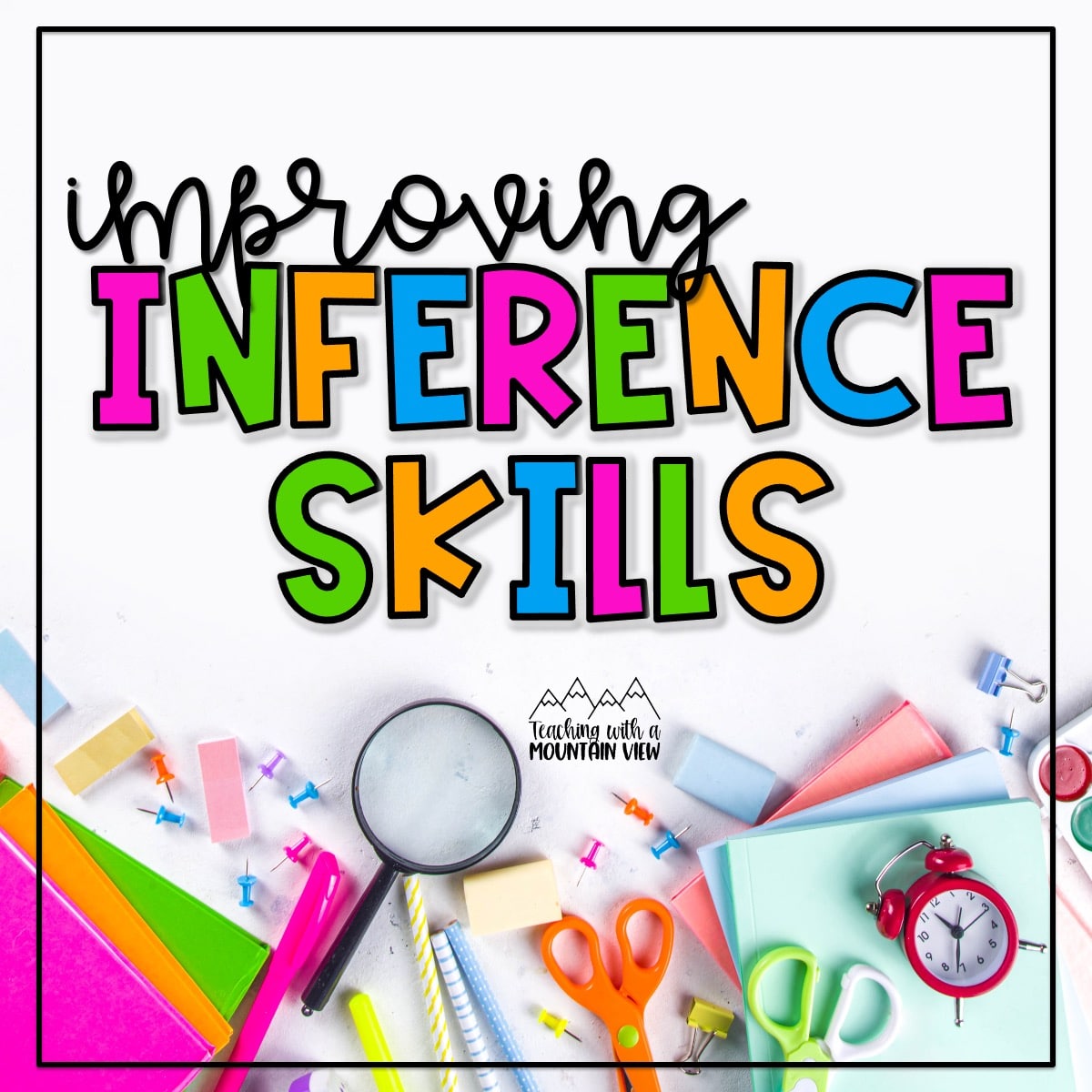
When you hear the word “inference,” does it make your head spin? If I had a penny for every time my coworkers and I talked about improving inference skills, I’d be rich! Inferencing is always a big topic of conversation because it’s a tough skill that has a huge impact on our students’ reading comprehension skills, no matter their grade level. It’s also taught in EVERY single grade in elementary school, so coming up with new and engaging ways to teach it can be challenging.
For that reason, I am always looking for engaging and unique ways to enhance my students’ inference skills with activities that go beyond just simply reading and answering inference questions.
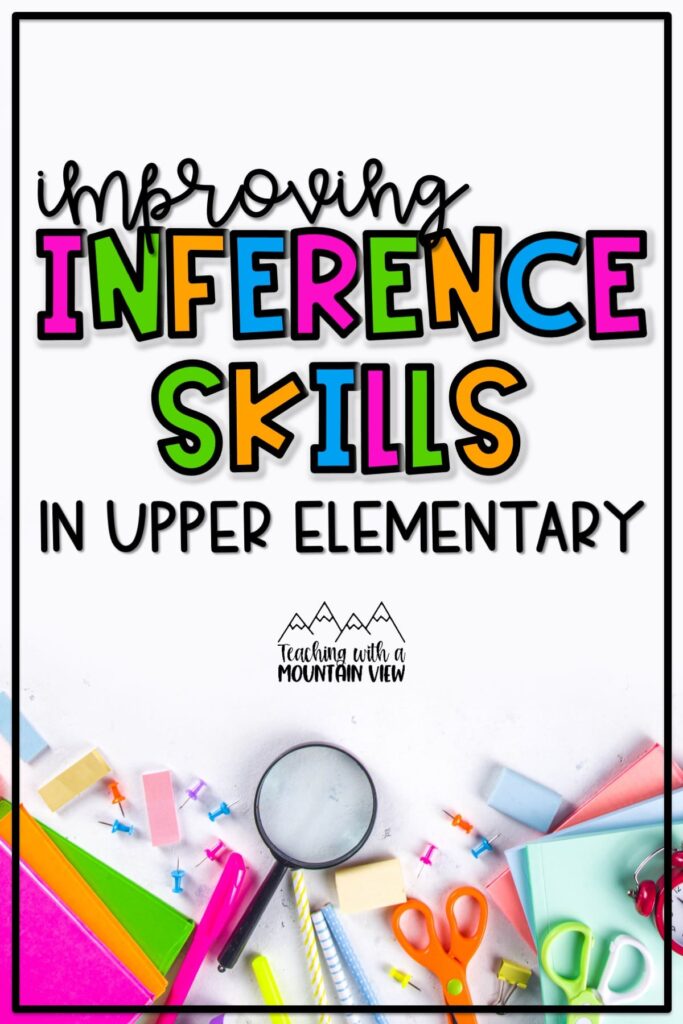
What is an inference?
It is always amazing to me that I will get students in 3rd or 4th grade who aren’t familiar with the word “inference.” They don’t know the difference between literal and inferential thinking or writing, and it is crucial that they can use this specific language to describe their thought process. It’s easy to say that inference is simply reading between the lines, but using figurative language to explain an already difficult topic may not be ideal. 😉
In short, inference is the process of using observations and evidence to make logical conclusions. Inference requires drawing conclusions based on observations and information.
Different Types of Inferences to Teach
One thing that makes teaching inference a challenge is that there are several different types of inference that elementary school students may encounter. Here are some of the different types that I am sure to address every year:
- Observation-based inference: This is when students make an inference based on what they see or experience. For example, if a student sees that the ground is wet and the sky is cloudy, they may infer that it rained earlier.
- Text-based inference: This is when students make an inference based on the information they read in a text. For example, if a student reads a story describing a character who is sad and alone, they may infer that the character is feeling lonely, even if the text doesn’t explicitly say so.
- Prediction-based inference: This is when students make an inference based on what they think will happen in the future. For example, if students see dark clouds in the sky, they may infer that it will rain soon.
- Cause and effect inference: This is when students make an inference based on the relationship between two events. For example, if a student sees that their friend is crying, they may infer that something sad or upsetting happened to their friend.
- Prior knowledge-based inference: This is when students make an inference based on their prior knowledge and experiences, which of course, can vary widely. For example, if a student sees a picture of a lion near a bunny rabbit, they may remember learning that a lion is a predator and infer that the bunny is in danger.
It’s always important to emphasize to students that making inferences can sometimes lead to incorrect conclusions if the evidence or observations are incomplete or if the student doesn’t properly apply critical thinking skills. Therefore, it’s important that teachers provide students with opportunities to practice making inferences and guide them through the process of evaluating evidence and observations.
Strategies for Improving Inference Skills
I’ve found that using visuals is the best way to begin improving inference skills.
Use Pictures To Teach Inference
Using pictures is one of my favorite accessible and engaging ways to practice inference. During my first year teaching, my husband was out hiking with a buddy, and his other friend snapped a picture of the two of them debating which way to go. One was holding a map, the other a GPS, and they both looked LOST. I took one look at that picture and said, “I need that! I’m bringing it to school to show my kids tomorrow.” I printed it out, and the next day, we created this anchor chart:
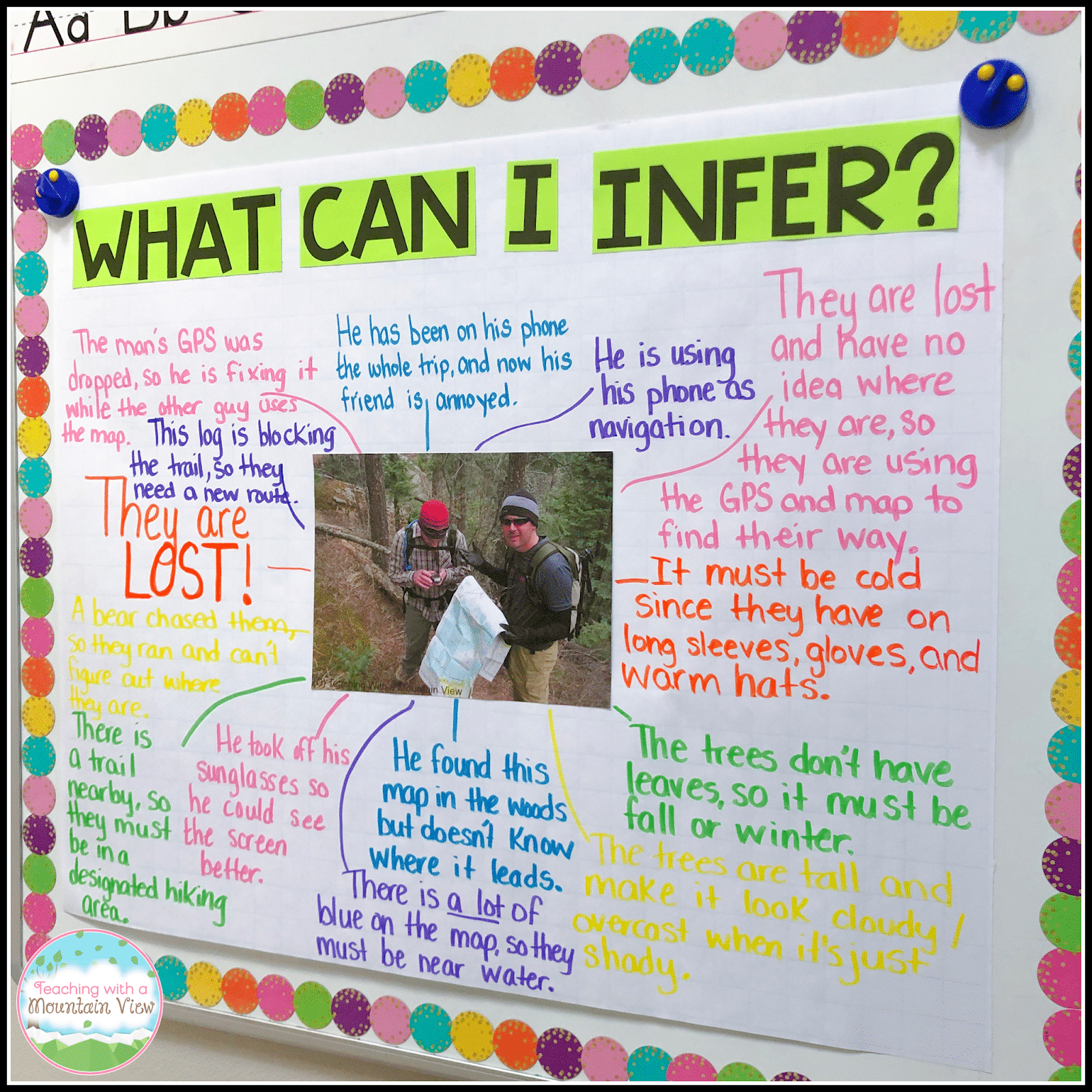
That was a lightbulb teaching moment for me and I’ve been using pictures to teach reading skills ever since! I also use pictures to discuss the difference between literal and inferential observations.

I have my students work on making their own observe/infer chart. You can download this free follow-up inference lesson.
Finally, we slowly transition from inferring from pictures to inferring from texts. We completed one Inference Using Pictures to Teach Reading Skills page together to introduce how this can be applied to our reading. It’s part of this Using Picture to Teach Reading Skills resource, which also includes similar pages for many other upper elementary reading skills.
Use Videos To Teach Inference
Videos are another engaging way to teach and practice inference. Students really take for granted just how many inferences they make on a day to day and moment by moment basis so SHOWING them how often they make them is critical!
This Toy Story 3 clip is perfect for asking inferential questions like:
- How is Woody feeling, and what evidence do you have to support that?
- What are some character traits that Woody possesses, and how do you know?
- What are some character traits that Buzz possesses, and how do you know?
- What can you infer about each character’s relationship with Andy?
- What can you infer about the setting of the clip?
- What can you infer about Woody’s relationship with Bullseye?
- What can you infer about the woman who appears at the end?
- Did you have background knowledge about this movie that helped you make inferences based on the scene?
I also use this Finding Nemo clip in a similar way… Here are some of the Finding Nemo questions I ask after showing this clip:
- How does the movie use music to help you make inferences and make predictions?
- How did the dentist infer that Nemo was dead? What background knowledge may he have had to make this inference?
- What inferences did the young boy in the waiting room make? Why?
- Do you think the dentist was surprised by the bird in the office? Why or why not?
It’s best if you can ask these questions and make a chart that shows the inferences that were made based on actual observations. For example, the chart may say something like: “I infer that Woody is loyal because he says in the clip that he will be there for Andy no matter what.”
Visit this reading skill videos post for more reading skill videos and suggested practice activities to use with them.
Teaching Inference in Multiple Ways
Exploring character actions and dialogue in a text is another important way to extend inferential thinking. After reading a story, talk about character motivations that haven’t been explicitly stated but were inferred. Why did Maribel get in a fight with her grandma? What emotions were they each feeling during the fight? (Note my Encanto references there!)
Analyzing advertisements is also a fun way to practice inference. Advertisements often use implicit messages to appeal to their target audience. Analyzing advertisements can help students practice making inferences beyond the surface level. These are some of my favorite commercials to have students watch and make inferences based on. Please preview all of them ahead of time to make sure they are a good fit for your students.
- Ed Sheeran Ketchup Commercial
- Adidas Break Free Commercial (This one is most appropriate for older students in grades 6+)
- Mercedes Benz Wordless Commercial
- Travelers Insurance Dog Commercial
You can also analyze letters. One activity I complete with students is the PenPal Inference activity. In this activity, I challenge my students with a mystery where students read several letters and make inferences about the pen pals based on the letters. This helps both their reading skills as well as their real-life inference skills!
Not only do these activities present information in new ways, but students are challenged with receiving several pieces of information and drawing one inference from it all. This is sure to enhance their inference skills! You are going beyond one piece of information and one inference to several pieces of information combined into one inference. That takes some brain work!
How can you weave inferencing into your everyday classroom instruction?
Luckily, bringing inferencing into your everyday routine is pretty simple. In fact, students could even practice inferencing multiple times a day. If that doesn’t build their skills, I don’t know what will! Here are some easy ways to bring inferencing practice into your everyday instruction:
#1 Centers
When I plan reading centers with my students, inferencing is always a top priority. You can have a dedicated inference center each week, or you can slip inferencing into a review station. These center activities might be inferencing task cards, reading a short passage and making an inference, or a mystery inferencing activity. This Ultimate Inference Bundle will keep your centers full all year long. It’s called ultimate for a reason because it contains over twenty inferencing resources (400+ pages) from task cards, picture inference activities, paired passages, mystery activities, and more. These activities can be used for centers, morning work, small groups, early finisher activities, and more in any 3rd – 5th grade classroom.
I also created these Seasonal Inference Centers in both paper and digital options, so you can pick the format that is best for you. Save yourself time and stress with these done-for-you centers. Teach your students how the centers work once and then swap out the pieces all year with back to school, Halloween, Thanksgiving, Holiday, Valentine’s Day, and End of the Year themes. Upper Elementary students love seasonal fun too!
#2 Morning Work
As your students arrive in the morning, or you are warming up for the day, having students complete inference morning work is a great use of time. These don’t need to be complicated assignments, especially because students are likely still waking up! Instead, I suggest a simple task card.
This Inference Task Card Bundle will make your morning routine easy-peasy. There are lots of seasonal and engaging task card themes, so your students won’t get bored. My favorite are the inferencing riddle task cards! We often talk about these during morning meetings. Who doesn’t love a riddle?
Task cards can also be used for “inference of the day” as a daily challenge for students! Leslie from LaLaTeacherLife shared this image of how she uses them every single day!
#3 Early Finishers and Enrichment
Another way to include inferencing in your classroom daily is with early finishers or as an enrichment activity. I make sure my early finisher work isn’t busy work but truly engaging material that enhances students’ skills. Personally, I like my early finisher work to be more project-based, so it’s more engaging, and students have something to continually work on when they are done. This way, I have fewer students asking, “What do I do now?” because they know to jump into their project.
Camp Conundrum is an example of an inference project. Students will have a blast tagging along on a camping trip while practicing their inferencing skills along the way. Each task reviews inferencing in a different way, allowing for easy differentiation! You can easily create different packets based on the ability of the different students in your class.
Then, you can move on to other reading skills using this Reading Project Bundle.
More Inference Tips
If you’re ready to dig deeper into inferences, this Teaching Inference In Upper Elementary post has more ideas and several FREE activities too.
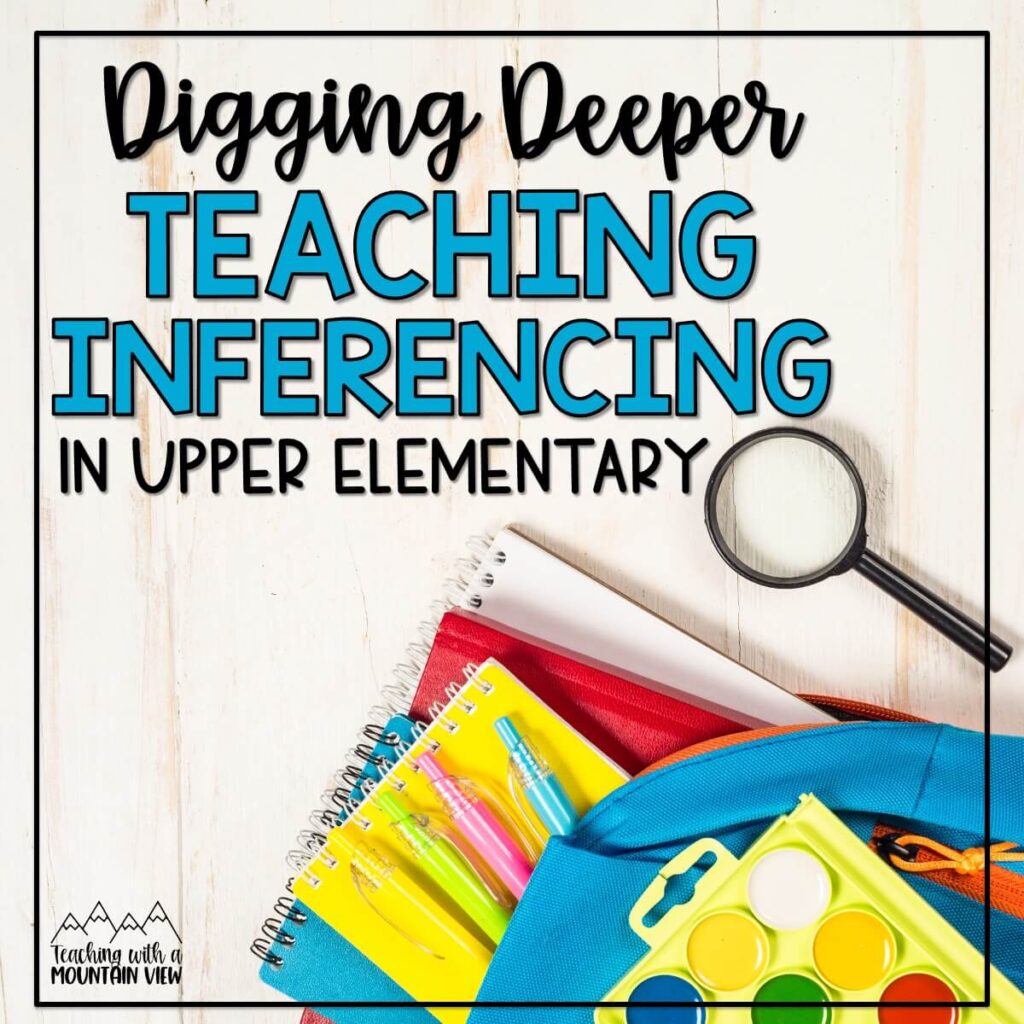
Mary Montero
I’m so glad you are here. I’m a current gifted and talented teacher in a small town in Colorado, and I’ve been in education since 2009. My passion (other than my family and cookies) is for making teachers’ lives easier and classrooms more engaging.







